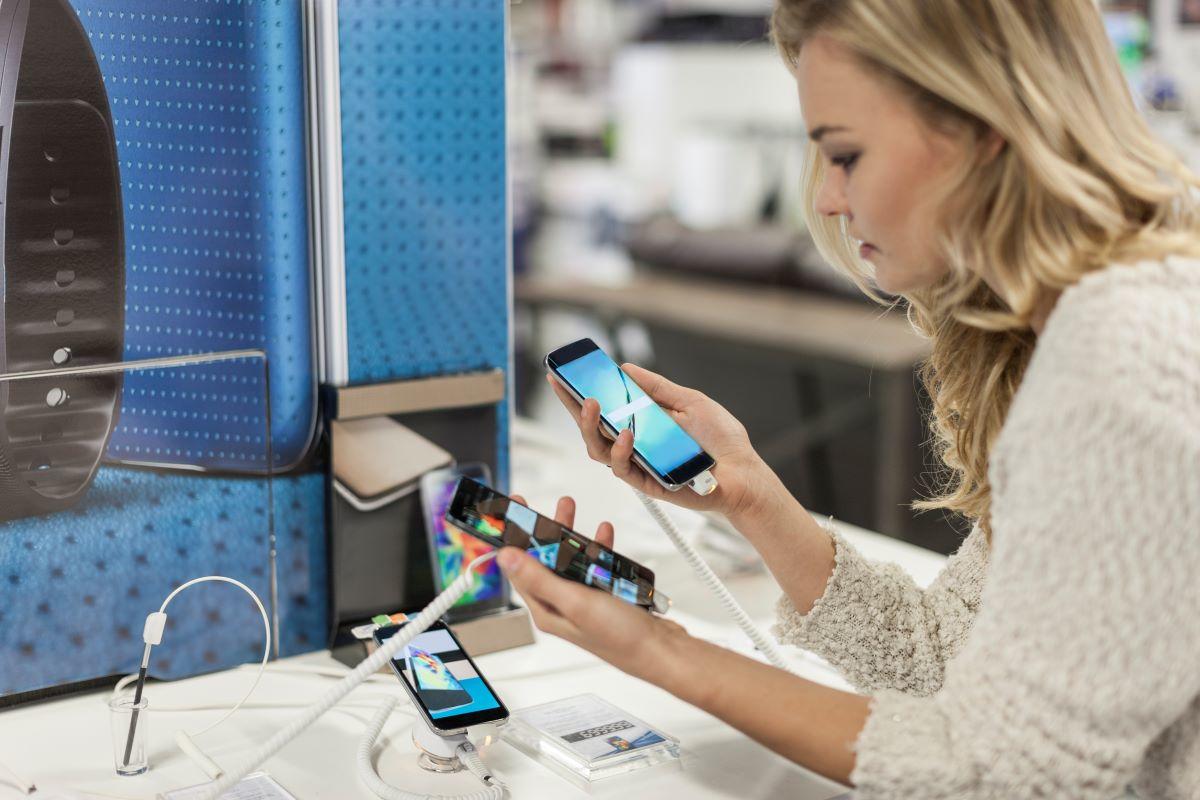[ad_1]

Much of the spending that was put aside in 2020 was pushed back to 2021 instead, and smartphone sales are now booming.
Westend61 / Getty Images
Smartphone users are showing a keen interest in buying new handsets after a year marked by sinking sales. New analysis published by Gartner reveals that the industry is already seeing double-digit growth and showing signs of speedy recovery.
In the first quarter of 2021, global smartphone sales reached almost 378 million shipments – a 26% increase compared the same time last year, according to Gartner.
Consumers have remained cautious in their spending during much of 2020, while the COVID-19 pandemic created on-going economic uncertainty. This caused smartphone sales to decline 12.5% last year, but much of the spending that was put aside in 2020 was pushed back to 2021 instead.
“Consumers started spending on discretionary items as the pandemic situation improved in many parts of the world and markets opened up,” said Anshul Gupta, senior research director at Gartner. “However, one cannot ignore that the base for comparison is also lower in 2020, than it was in 2019. That explains the double-digit growth.”
Apple and Samsung continue to dominate the market, with Samsung over-taking Apple this quarter with a 20.3% share, leaving the Cupertino giant with just over 15% of the market.
The two companies have been chasing each other for years and are widely expected to continue to do so in the months to come. At the end of last year, for example, the dynamic was inverted: Apple overtook Samsung in the last quarter to own over 20% of the market, while Samsung claimed a 16.2% share.
This was largely due to Apple’s launch of the 5G iPhone 12, which contributed to boosting the company’s sales to hit 80 million devices in the last months of 2020 – a teaser of the growth to come to the remainder of the industry at the start of 2021.
Analysts have long anticipated that Apple’s new 5G-enabled handset would trigger a “supercycle”, generating more consumer interest in faster speeds and encouraging smartphone owners to upgrade their devices.
The uptake of 5G smartphones will boost the entire industry: much of Samsung’s recent growth, for instance, can be attributed to the early shipping of the company’s flagship 5G phones; and Gartner’s analysts expect that 5G-enabled devices will constitute 35% of total smartphone sales in 2021.
Apple, in particular, is expected to reap major financial benefits from this new supercycle. In a separate report, analysts from Juniper Research found that despite the Cupertino giant selling less than 20% of the total devices shipped, Apple will be bringing in nearly 40% of the value of sales in the next few years due to the higher price point of iPhones.
In 2022, estimate the analysts, the smartphone market will be worth $560 billion, of which Apple will be bringing in over $200 billion.
The trend is unlikely to reverse, since the cost of Apple’s devices is only expected to increase in the following years while Android devices become cheaper. According to the report, by 2024 the average selling price for an iOS device will stand at $700 globally, compared to just over $200 for Android.
iOS users, however, won’t shy away from costly devices. This is because the company has succeeded at convincing a loyal base of customers to consistently upgrade to more expensive devices thanks to a curated ecosystem of software and hardware that has no equivalent in other vendors.
Case in point: the company’s XR and XS models, which are priced $750 and above, are among the most popular of Apple’s smartphones upon release, noted Juniper’s analysts.
It will take extra work for Android manufacturers, therefore, to lure users into buying their premium handsets. Juniper’s researchers pointed to various features that could help do the trick, ranging from foldable form factors to camera quality, through biometrics-based security and, of course, 5G connectivity.
But even that might not be enough. To compete against Apple’s long-established brand reputation is likely to be a challenge that even feature diversification won’t solve.
“The most successful smartphone providers have moved beyond bringing consumers in because of their features. They are brought in and retained because of the brand, rather than because of what things phones do necessarily,” James Moar, who co-authored Juniper’s report, tells ZDNet. “iOS has an advantage here because it has its own self-contained ecosystem, whereas the Android ecosystem is open to many vendors, who generally have a weaker individual brand identity.”
Moar, therefore, recommends that smaller vendors expand their marketing spend to increase awareness of the brand, which few vendors have done on an international scale to date.
With Apple’s sales projected to soar over the next few months, it will take a serious dose of innovation for smaller players to make a dent in the market. For consumers, however, it might mean better devices that will make the upgrade all the more tempting.
[ad_2]
Source link